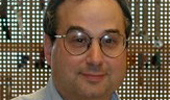The Chemistry & Biochemistry Colloquium Series presents Dr. Barry K. Lavine on “Pattern Recognition Assisted Infrared Library Searching of Automotive Clear Coats” on Monday, Feb. 16, at 4 p.m. in Walter 235.
Levine is Professor of Chemistry at Oklahoma State University.
Abstract: Pattern recognition techniques have been developed to search the infrared (IR) spectral libraries of the paint data query (PDQ) database to differentiate between similar IR clear coat paint spectra. The library search system consists of two separate but interrelated components: search prefilters to reduce the size of the IR library to a specific assembly plant or plants corresponding to the unknown paint sample and a cross-correlation library searching algorithm to identify IR spectra most similar to the unknown in the subset of spectra identified by the prefilters. To develop search prefilters with the necessary degree of accuracy, IR spectra from the PDQ database are preprocessed using wavelets to enhance subtle but significant features in the data. Wavelet coefficients characteristic of the assembly plant of the vehicle are identified using a genetic algorithm for pattern recognition analysis and feature selection. A search algorithm is then employed to cross-correlate the unknown with each IR spectrum in the subset of library spectra identified by the search prefilters. Each cross-correlated IR spectrum is simultaneously compared to an autocorrelated IR spectrum of the unknown using several spectral windows that span different regions of the cross-correlated and autocorrelated data from the midpoint. The top 5 hits identified in each search window are compiled and a histogram is computed that summarizes the frequency of occurrence for each selected library sample. The 5 library samples with the highest frequency of occurrence are selected as potential hits. Even in challenging trails where the clear coat paint samples evaluated were all the same make (e.g., General Motors) within a limited production year range, the model of the automobile from which the unknown paint sample was obtained could be identified from its IR spectrum.



















Comments